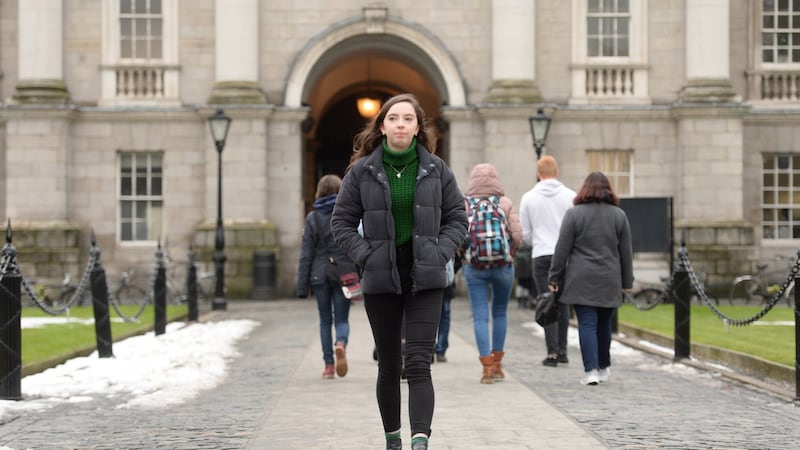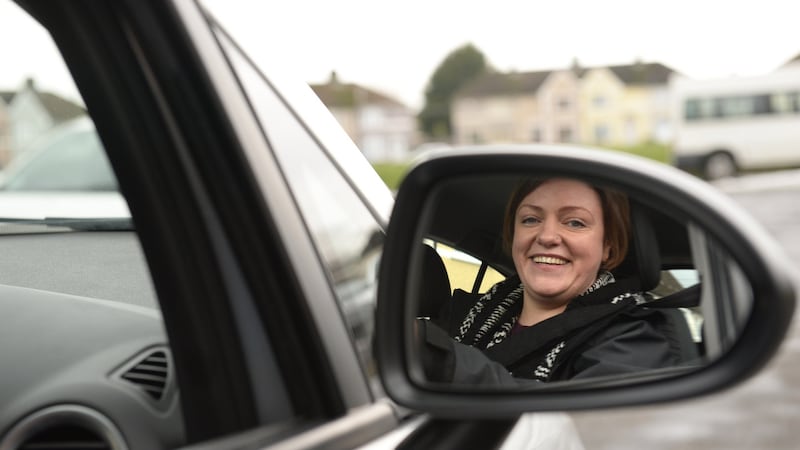To many driving a car is one of the more mundane occurrences in their day. People drive to the office, collect kids from school, visit friends and family. Some drive as part of their job; it’s fairly run of the mill. The road trip is both a classic holiday destination and movie genre.
But what of the many Irish people who can't – or won't – drive. Thelma and Louise would have been a very different film if the titular pair had been travelling by Dublin Bus, and Cameron from Ferris Bueller's Day Off would not have been nearly as nervous throughout the film if he had stolen his father's Leap Card rather than his Ferrari.
But is driving really all it’s cracked up to be?
As infrastructure and public transport improves in Ireland, many people leave it later and later to learn how to drive. For many adults living in urban areas there is no practical or financial incentive to start driving.
In 2012, there were 2,413,936 full driver's licence holders in Ireland, in addition to 257,334 learner permit holders, according to the Central Statistics Office (CSO) and the Road Safety Authority (RSA). A further 575,000 licences – full and learner – were issued in 2016.
There is a noticeable urban/rural divide in the age when people start to drive. In rural areas driving may be the only method of getting from A to B; the earlier young people get a licence, the more freedom they will have. However, in cities, with plentiful public transport options, young people don’t need a driving licence to maintain a semblance of independence.
This did not prove to be the case for Catríona Farrell (21) originally from Carlow. She never learned how to drive while living at home, and now lives in Dublin during the academic year, so doesn’t see the necessity to learning.
"I just never got around to it when I was in school, and I live in Dublin full time now, get the Dart to both work and college, and live relatively close to a few different supermarkets, so it's not a necessity. Also I feel I definitely wouldn't be able to afford to upkeep a car on top of renting in Dublin."
As she lives in Dublin at the moment, learning is not high on her list of priorities, although she envisions herself pursuing lessons some day.
Independence
“I’d imagine I will learn at some point, I’d definitely like to for the independence of it, but it’ll probably be a few years down the line when I’m more financially stable, or not living somewhere with decent public transport.”
However, for Kathleen McNamee (21), from Skreen, Co Sligo, not driving is a already a huge disadvantage. While her father taught her how to drive in their yard, she has never sat the theory test or undergone any lessons.
“It’s very hard to go anywhere or see anyone without a car. I’ve been really reliant on cycling. Socially I’m very dependent on my parents or other friends who can drive for lifts to places.”

While she would like to start lessons and get her licence, the cost of getting the licence is too much at the moment. “My parents have always really wanted me to drive, but even with me working it’s way too expensive for me to justify it.”
The process of getting behind the wheel in Ireland today is both lengthy and costly. To receive a learner permit one must first pass a theory test. The test costs €45, while the official RSA driver theory test practise DVD costs €18, although there are other books and variations available.
Drivers must then undergo compulsory lessons. In 2010 new regulations were introduced by the RSA stating that all new first-time learner permit holders would have to undertake a mandatory 12 hours of initial basic training with an approved driving instructor.
At an average of €30 per lesson (this rises to €45 in some Dublin schools), 12 lessons will set you back approximately €360. Some driving schools include a mock test, others charge extra for it. The test itself then costs a further €85.
If a driver passes both their theory and practical test first time, buys the practise DVD, does the 12 lessons and have their mock test included, learning to drive would cost them a minimum of €500 before the cost of buying and maintaining a car, plus tax and insurance.
This is assuming a driver will pass their practical test first time; pass rates vary considerably throughout the country. According to the RSA, the national average pass rate was 53.65 per cent in 2016. The highest pass rate was in Ennis, Co Clare at 73.25 per cent, while the lowest pass rate was in Churchtown, Co Dublin, at 42.41 per cent.
Driving instructor
Leah Cullen is a driving instructor based in Rialto, who works all over Dublin. She has been a driving instructor for 15 years, and has had several students learning to drive at a later age, with some in their 70s, although she does not believe that learning to drive at a later age is a new phenomenon, in Dublin at least.
According to Cullen, the cost, particularly that of insurance, is one of the main deterrents to learning to drive today.
“One major impediment is the cost, particularly insurance. When you’re learning to drive you’re looking at €2,000 minimum, and that’s with shopping around. And you can’t offset that by getting a cheaper car, because then the insurance goes up again.”
This is not just the case for younger drivers either.
“I’ve had a couple of students in their 30s and they’ve started their lessons and paid up front for the 12, and I say, ‘things would be running smoother if you were insured on a car, a friend’s or someone in your family’s’, but it can be so expensive. Some get a quote of €700 for three months on one person’s car, but it’s free on someone else’s, so it’s difficult to know.

“I’ve had some people that have had a few lessons and then rang me to say ‘actually, scrap the rest of them because it’s too expensive’.”
Cayci Kendellan (31), originally from Blackrock, Co Dublin, and now living in Rathmines, has never learned to drive.
“I’ve done my theory test six times, I’ve passed it six times, I’ve gotten provisionals and I’ve let them expire. I don’t have a current provisional because I let my last one expire again, so I need to start from scratch and sit the theory again. I’ve a fair idea because I’ve sat it so many times.
“When I was 17 and all my friends were learning, I never really had that huge want to do it, and because everyone around me drove it wasn’t a big deal, there was always someone driving.
“Because at the time I was living in Blackrock, everything was always so accessible. There were always buses and Darts; it wasn’t as if I was out in the middle of nowhere and had to drive to get places. It’s always something I’ve planned to do, and I still plan to do, but the years just went on and it never happened.”
The time commitment and costs involved in getting a full licence have been a deterrent for Kendellan.
Real commitment
“It’s such a big process, you have to do the theory, get that in order to get your provisional, then do the 12 hours, so it’s a real commitment. Insurance and all the other costs are huge too. People say to me, ‘how do you not drive?’ and I say, ‘I don’t know what it’s like, so I don’t miss it’.”
Radio presenter and comedian Mario Rosenstock (47), currently touring his new show In Your Face, has also never learned to drive.
“One of my pet hates in life is queuing. And driving is basically queuing, moving and queuing. You don’t even get something at the end of it. If you’re queuing at an ATM, which I don’t like either, at least you get your money at the end. But driving, you’re queuing to get to the place that you’re going to wind up anyway.”
Over the last number of years Rosenstock has taken to getting taxis everywhere, which, according to his accountant, may have saved him money.
“I have subsequently been told by my accountant that it is actually cheaper for me to get taxis everywhere than it is for me to own a car. He said it works out just cheaper to get taxis everywhere, even down to the shops to get milk, than to own a car. Because cars now with tax, very high insurance, depreciation, very high petrol, it’s cheaper.”
In fact, only on one occasion has not driving ever proven to be an issue for Rosenstock, and that was on the set of Glenroe.
"I was acting in Glenroe, I was playing a doctor, and in my opening scene I thought I was Ireland's version of Hugh Grant, a dashing, mildly middle-class doctor, and they said that my first scene was to drive in, swoosh out of the car and invite this girl on a date.
“And I said, ‘I don’t drive.’ And they said it didn’t matter, just drive in slowly, and I said, ‘no, you don’t understand, I don’t drive.’ And they said, ‘you can’t even do that?’ and I said ‘no, I don’t drive at all.’
Stunt driver
"So it eventually emerged that they had to put the RTÉ stunt driver co-ordinator into the passenger seat beside me, he leaned down on my lap, and had his hand on the wheel, and his legs over my legs pushing the pedals. So that by the time I got out of the car doing my suave, sophisticated doctor thing, I was getting out of the car where a man's head had just been buried in my crotch."
Despite the benefits he sees from not driving, Rosenstock believes that he will eventually learn to drive, and will buy the car of his dreams.
"I have a dream that I will learn to drive and I will buy an old 1970s silver Mercedes convertible. The same kind of model as Bobby Ewing used to drive in Dallas, and I will drive around with one hand on the wheel, the other on the car, with the roof down, and I will basically win at the end of the day, saying 'I've done it, I've learned to drive'."










